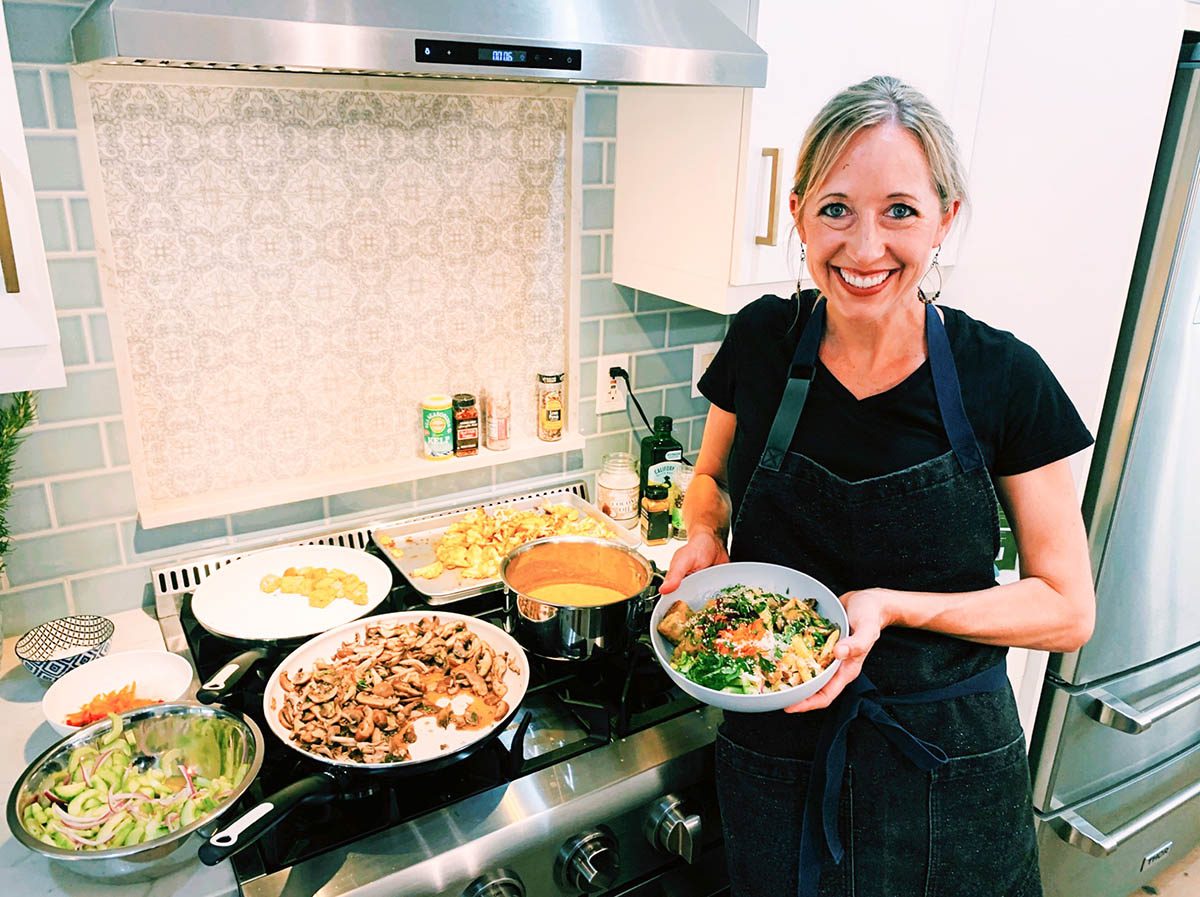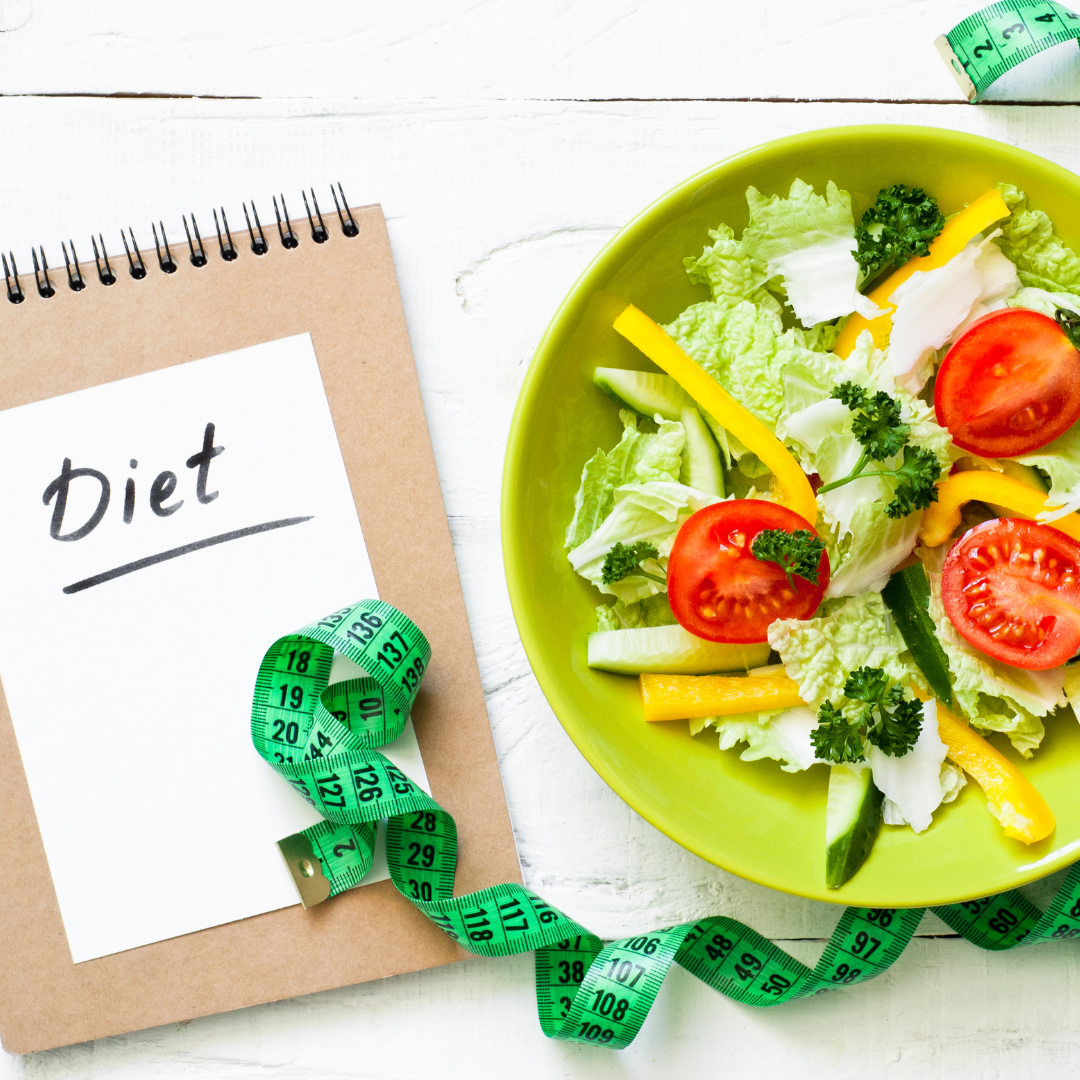Designed and Written by Chef Julie Frans of della bowls.
Your gut is yours and yours alone.
There’s no one else who has a gut just like yours. In fact, everyone’s gut is a unique ecosystem of 500-1000 types of bacteria creating its own biome.
That’s why your journey to attaining optimal gut health is completely unique, as well. You must walk your own path according to where you are, consuming foods that are nourishing and healing accordingly.
A registered dietitian and/or gastroenterologist can make a great coach and/or support team for you if you’re experiencing frequent discomfort, or if symptoms are affecting your daily health and well-being.
Recent surveys show that about 74% of Americans suffer from gut-related issues, from gas and bloating to indigestion, acid reflux, and abdominal pain. That’s a lot of people!
We hear time and time again how important diet and lifestyle are, especially when it comes to having a healthy digestive system. How many times have you heard “eat your veggies” or that we need more fiber?
But what that means for you might be completely different from what it means for someone else, and the food that will help your gut get healthy will be different from someone else’s.
If your gut is severely imbalanced, and you suffer from symptoms and discomfort, you might not be ready to take on a ton of raw roughage and fibrous grains. You may need to start with cooked vegetables, softer textures, and more fermented foods.
If you don’t experience symptoms or discomfort, you can likely take on fibrous veggies more aggressively.
“Eating more veggies” for one person might mean starting out with cooked and mashed or pureed veggies that fall into a certain category, while for another it means loading up on as many raw veggies and whole grains as possible.
Make della bowls at home with this perfect formula:
A great way to start adding more colored veggies into your diet is to create bowls that combine simply prepared vegetables, plant-based proteins, and possibly seeds, nuts, and grains, layered and tied together with a delicious sauce.
If you are into meal-prepping, you can even prepare a few recipes at once and store them in the refrigerator for easy access and quick meal-making through the week.
della bowls-style meals are simple, mix-and-match combinations that can be completely customized according to your needs, your gut, and your place in your journey to health.
The formula for della bowls is always the same: base + plant-based protein + vibrant cooked and/or raw veggies + globally inspired sauce + boosts (or toppings). The options of what you can put in your bowl for each category are endless!
We’ve offered a few recipes here, below, to get you started.
All of these recipes, plus a lot more, can be found in our newly launched digital cookbook. It will be your go-to for a variety of mix-and-match recipes that inspire creativity and layers of deliciousness.
Introducing: The “Nutritiously You!” Bowl- Version 1 and 2
Version 1: For the new-ish veggie eater with gastrointestinal symptoms and discomfort
Base: roasted spaghetti squash
Protein: marinated baked tofu
Vegetables: sauteed greens; roasted carrots & turnips
Sauce: coconut-curry-cashew (yellow) sauce
Boost: fermented roots (beets, carrots, radish); kelp flakes; fresh herbs
*Avocado would also be a great boost too!
Version 2: For the veggie-lover who does not experience symptoms or discomfort
Base: Tri-color quinoa and/or roasted spaghetti squash
Protein: chipotle marinated baked tofu
Vegetables: marinated kale; turmeric roasted cauliflower
Sauce: coconut-curry-cashew (yellow) sauce
Boost: raw roots (beets, carrots, daikon radish); toasted almonds
Differences of version 1 and version 2
Base
-
In the version 1 bowl, we stay away from whole grains and high fiber. Spaghetti Squash is easily digested, very nourishing to the internal organs, and helps to reduce the flare up.
-
When there are no symptoms and the gut is on track, you can add heartier fiber and grains, like quinoa, brown rice, and amaranth.
Protein
-
For people suffering from indigestion, consuming spicy foods and chiles are discouraged.
-
The marinade on the tofu is the same in each bowl, only the marinade incorporates chipotle chiles in version 2. Neither version will be spicy, per say, but even the small amount of chiles may cause discomfort, so it’s best to omit until remission is reached.
-
Tofu should be organic. It is easily digestible and a good source of plant-based protein.
-
Tempeh is also a great option for plant-based protein, especially because it is fermented and especially healing to the gut.
Vegetables
-
It’s recommended that people just beginning the journey toward healing their gut and still experiencing symptoms, pain or discomfort, eat mostly cooked vegetables, and avoid cruciferous veggies that cause gas, like cauliflower, broccoli, or Brussels sprouts.
-
In version 1, we have included roasted root vegetables that are easily digestible and calming to the gastrointestinal system, as well as a mix of sauteed greens. If you can tolerate onion and garlic, it can be used to saute the greens. But, if you aren’t sure, best to omit them at the beginning.
-
Once you can eat more roughage and cruciferous veggies, swap out the cooked greens and roasted carrot/turnip mixture for marinated raw kale and turmeric roasted cauliflower.
-
Get creative with trying new veggies in this section according to your gut health and what you can comfortably tolerate.
Sauce
-
This sauce does have a small amount of nuts (raw cashews), but because they are boiled in coconut milk and softened, then ground to a smooth texture, they are more digestible.
-
Coconut milk is very soothing to the digestive tract, and offers a healthy fat that helps to satiate and sustain fullness without bloating.
-
Curry powder contains turmeric and aids in reducing inflammation, so is a fantastic ingredient to include in a sauce, no matter what stage you are at.
-
Ginger is also very settling to the stomach, and always a powerful ingredient when handling gastrointestinal issues.
-
If you are new to this program, and are not comfortable consuming onions and garlic, omit these ingredients. Instead, use chopped up green onion tops. (Don’t use the white part).
Boosts
-
Shredded raw roots or fermented roots would work well for either version of the bowl.
-
We suggest fermenting them for version 1 simply to make them more digestible. This does take a little planning, since the fermenting process can take days or even weeks. If you don’t have the time to prepare the fermented version, raw will work fine.
-
Kelp flakes can also be added to any meal as a boost, adding flavor and trace minerals.
-
Avocado is a great boost that adds creaminess, healthy fats, and is soothing to the gut.
-
Toasted nuts or seeds can be added as a boost once the gut is healthy and won’t be adversely affected.
A few recipes to get you started on your plant-based bowl making journey
Spaghetti Squash
INGREDIENTS
-
1 large spaghetti squash
-
extra virgin olive oil
-
salt
PROCEDURE
-
Heat the oven to 400.
-
Cut squash in half lengthwise. Scoop out the seeds.
-
Drizzle the insides lightly with olive oil and sprinkle with salt and pepper.
-
Place squash flat side down on the baking sheet.
-
Then, poke a few holes in the skin of the squash with a fork.
-
Put the squash in the oven.
-
Roast the squash for 30-40 minutes. It should be browning on the skin and easy to pierce with a fork. Time may vary depending on your oven and the size of the squash.
-
Remove from the oven and flip the squash so that it’s cut side up. When cool to the touch, use a fork to scrape and fluff the strands from the sides of the squash.
Marinated Baked Tofu
INGREDIENTS
-
2 tablespoons extra virgin olive oil
-
2 tablespoons tamari
-
1 tablespoon fresh squeezed lime juice
-
1 tablespoon blackstrap molasses or maple syrup
-
1 block organic extra firm tofu, cubed
-
pinch of salt
-
1 tablespoon canned chipotle in adobo (FOR VERSION 2 BOWL ONLY)
PROCEDURE
-
Place all marinade ingredients in a bowl and whisk together.
-
Place the tofu cubes in a dish and pour marinade over them. Allow tofu to marinate for anywhere between 30 minutes and 6 hours, covered, in the fridge.
To cook:
-
Preheat the oven to 375°F.
-
Using a slotted spoon, remove the tofu from the marinade and lay out on a baking sheet. Sprinkle the tofu with salt.
-
Bake tofu for about 30 minutes, or until golden and firm and the marinade is turning golden.
Sauteed Greens
INGREDIENTS
-
1 pound of greens (about 2 bunches total) – can be a mix of kale, chard, collards, mustard greens, broccoli rabe, or others
-
¼ cup extra virgin olive oil
-
½ cup yellow onion, coarsely chopped (use green tops of green onions if experiencing IBD symptoms)
-
3 medium cloves of garlic, thin sliced (omit if symptomatic)
-
½ teaspoon lemon zest
-
¼ teaspoon sea salt
-
1 tablespoon fresh squeezed lemon juice
PROCEDURE
-
Wash all greens well and dry as much as possible.
-
If using kale and collard greens, remove the stalks and discard stems.
-
If using swiss chard, trim the stalks and ribs from the greens. Cut the stalks and ribs into ¼ inch slices. Set aside.
-
Cut all of the de-stemmed greens into ½ inch ribbons.
-
Heat a saute pan over medium heat with olive oil. Add the onions, garlic, and chopped stalks. Stir frequently.
-
After a couple of minutes, when the stalks and onion are softened, add the greens. Cook, stirring often. Add a touch of water if the greens are sticking to the pan.
-
Remove from heat. Add lemon zest, salt and lemon juice. Stir to combine. Taste and adjust flavor, if needed.
Coconut-Curry (Yellow) Sauce
INGREDIENTS
-
1 cup onion (SEE NOTE BELOW)
-
1 clove garlic, smashed (OMIT FOR VERSION 1/ symptomatic)
-
2 tablespoons extra virgin olive oil
-
1 ½ tablespoons yellow curry powder
-
½-1 cup raw cashews
-
1 14-oz. can regular coconut milk
-
1 cup water
-
½ teaspoon salt
-
Optional: 1 teaspoon fresh squeezed lemon juice
NOTE:
-
Use 1 cup yellow onion, diced FOR VERSION 2 / asymptomatic
-
Use 1 cup chopped green onion tops – FOR VERSION 1/ symptomatic
PROCEDURE
-
Heat olive oil in a medium saucepan over medium-high heat. Add onions and garlic. Sautee on medium-low heat until onions are translucent and starting to turn golden brown. Add curry powder and sauté about 10-20 seconds.
-
Add cashews, coconut milk, and water. Bring mixture to a simmer, whisking occasionally. Simmer sauce for about 20 minutes to thicken. Season with salt. Add a squeeze of lemon juice, if desired.
-
Use a blender to mix to make the sauce very smooth.
-
Remember that hot liquids in a blender can be dangerous. It’s important to allow some air flow, and to start blending on the lowest setting, slowly increasing to high speed.
-
When the sauce is completely smooth, it is ready to use over your bowl or other food.
Fermented Raw Roots
INGREDIENTS
-
5 pounds of roots (combination of carrots, beets, and daikon radish)
-
3 tablespoons sea salt
-
½ cup water
PROCEDURE
-
Grate vegetables on a box grater. Mix in a bowl.
-
Sprinkle with salt and mix well. Let sit a few minutes.
-
Add about a half cup of water and mix.
-
Put a plate over the top of the roots and weight it to press down.
-
I recommend covering it with a paper towel and cinching the top with a rubber band to avoid bugs getting in the fermenting veggies.
-
Let the bowl sit on the counter for several days. Check it often to make sure that the brine level is always above the veggies.
-
The ferment should be ready after about 5 days. The longer it sits, the stronger the flavor will be.
-
When it’s ready, put it in a jar with a top and refrigerate.
Option: You can also just enjoy your roots raw and un-fermented. Simply use 1 beet, 2 carrots, and a piece of a daikon radish. Grate the veggies and serve them as is… no salt needed.
Putting your bowl together is easy
-
When you have prepared your ingredients, get your large, shallow bowl.
-
Layer the items from each category in a color-wheel style.
-
Start with the base, and work your way around, adding the plant-based protein, then veggies.
-
Top with a boost like avocado or raw roots.
-
Drizzle with sauce.
-
Top with any final toppings like seeds or nuts, fresh herbs, or kelp flakes.
-
Dig in, and enjoy!
To gain access to more of Chef Julie’s delicious recipes and purchase her cookbook, visit her at della bowls!












